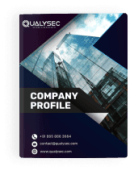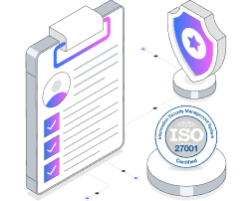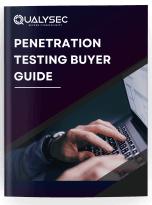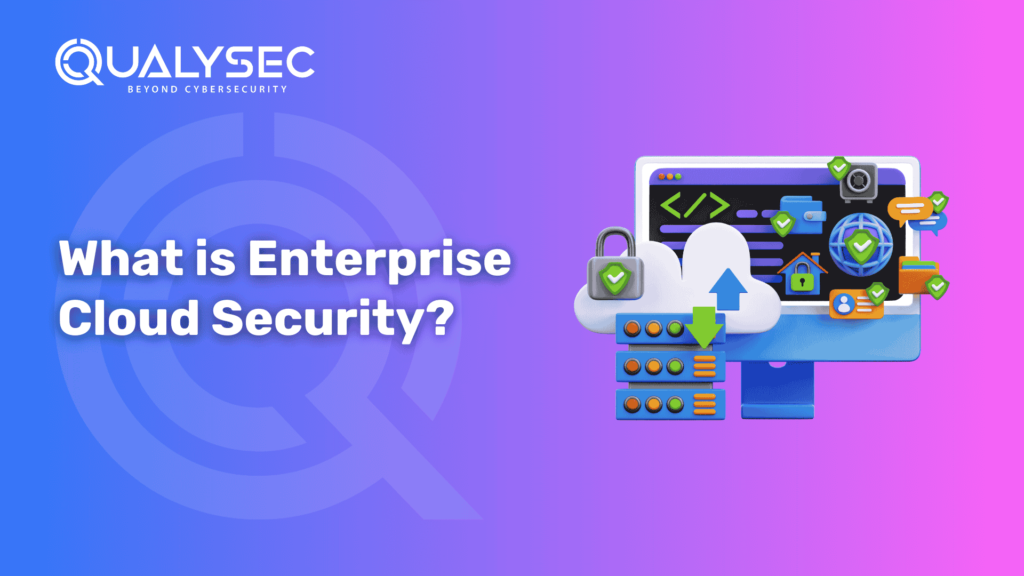What is Enterprise Cloud Security?
Businesses are rapidly moving to the cloud. While this digital transformation offers unprecedented scalability and efficiency, it also faces new and complex security challenges. Safeguarding cloud infrastructures has become critical for enterprises seeking to protect sensitive data, ensure compliance, and maintain operational continuity. Enterprise cloud security isn’t just an IT consideration; it’s a business imperative. This blog will cover everything you need to know, including key security components, challenges, and actionable insights to elevate your organization’s security posture. Definition – Enterprise Cloud Security Enterprise cloud security refers to the set of strategies, technologies, and best practices designed to protect data, applications, and infrastructures within cloud environments. This includes safeguarding against unauthorized access, cyberattacks, and data breaches while ensuring compliance with industry regulations. Modern enterprises depend heavily on cloud services for productivity, collaboration, and application hosting. But with great convenience comes heightened risks. Cybercriminals increasingly target cloud environments due to the wealth of sensitive data they host. A successful breach could lead to financial losses, reputational damage, and regulatory penalties. Cloud security creates a robust defense system, offering peace of mind while mitigating risks across public, private, and hybrid cloud environments. “Cloud security testing plays an important role in identifying vulnerabilities and securing enterprise cloud environments.“ Key Components of Enterprise Cloud Security Implementing effective enterprise cloud security requires addressing multiple layers of protection. Here are the critical components: 1. Identity and Access Management (IAM) Identity and Access Management (IAM) involves controlling who has access to specific systems and data within a cloud environment. It ensures that the right individuals access the right resources at the right time and for the right reasons. Why IAM Matters: Examples of IAM Best Practices: 2. Data Protection This component refers to the strategies and technologies used to safeguard sensitive information from loss, theft, and misuse. A comprehensive data protection strategy ensures data confidentiality, integrity, and availability. Why Data Protection Matters: Common Tools and Strategies: “For an in-depth look at cloud security risks, read What is Cloud Security Risk Assessment?“ 3. Network Security Network security involves protecting your enterprise’s infrastructure and the data transmitted across it from unauthorized access, misuse, or attacks. Key Features of Network Security: Examples of Network Security Solutions: “For insights on cloud-specific security threats, check out Top 10 Cloud Security Threats.“ 4. Compliance and Governance Compliance ensures that your enterprise adheres to necessary regulations and standards, such as GDPR, HIPAA, or ISO/IEC 27001. Governance involves implementing internal policies that ensure your cloud resources are used and secured effectively. Why Compliance and Governance Matter: Best Practices: “For a comprehensive approach to securing your cloud infrastructure, explore Cloud Penetration Testing: A Complete Guide.“ Latest Penetration Testing Report Download Challenges in Enterprise Cloud Security While the cloud opens doors to innovation, it also brings a variety of security complexities to the enterprise landscape. Below, we’ll discuss the primary challenges businesses face as they secure their cloud environments. 1. The Complexity of Hybrid Environments Enterprises rarely operate within a single, unified cloud platform. Instead, hybrid environments that combine on-premises data centres with multiple cloud platforms—like AWS, Microsoft Azure, and Google Cloud—are now the norm. This mixed infrastructure offers flexibility but also creates fragmented security management systems that are harder to oversee. Key challenges include: Managing Consistency Across Platforms: Each cloud provider has unique interfaces and capabilities, requiring teams to juggle disparate security protocols. This fragmentation can lead to inconsistent implementation of controls and potential blind spots in defense mechanisms. Lack of Visibility: With data being stored and processed across multiple environments, achieving complete visibility into all enterprise assets is a daunting task. This lack of oversight can make it harder to detect unauthorized access or misconfigurations that could lead to breaches. Misconfigured Assets: Gartner reports that 80% of cloud breaches are caused by misconfigurations—simple yet damaging errors like unprotected databases, overly permissive access policies, or forgotten admin credentials. These oversights demonstrate how complex hybrid environments often outpace traditional security management capabilities. To address this complexity, enterprises must adopt centralized management systems and tools capable of automating configurations, maintaining visibility, and implementing security policies across environments. 2. The Evolving Threat Landscape Cyber threats targeting enterprises are growing at an unprecedented rate. Attackers continuously refine their strategies, deploying techniques spanning ransomware, phishing, and supply chain attacks. For enterprises with vast and dispersed cloud infrastructures, the risks are greater than ever. Key vulnerabilities include: Advanced Ransomware Attacks: Cybercriminals are becoming increasingly strategic, encrypting critical enterprise data and demanding huge ransoms. When successful, ransomware leads to operational downtime, financial loss, and damaged reputations. Supply Chain Attacks: Hackers exploit vulnerabilities in third-party vendors, planting malware or stealing privileged credentials during the enterprise’s procurement process. These attacks are difficult to detect and increasingly common in cloud-dependent organizations. Zero-Day Exploits: Zero-day vulnerabilities, software weaknesses discovered by attackers before companies can implement fixes, are particularly dangerous for enterprises with insufficient cyber threat detection systems. Enterprises must implement proactive security measures, such as threat intelligence, advanced monitoring, and multi-layer defenses, to guard against these constantly evolving threats. 3. The Widening Skill Gap One of the largest hurdles in enterprise cloud security is the shortage of qualified cybersecurity professionals. The rapid rise of cloud computing has outpaced the rate at which security experts are being trained, leaving many enterprises with expertise gaps that put their data at risk. Key challenges related to this talent gap include: Limited Expertise in Cloud-Specific Security: Traditional IT security expertise doesn’t always translate seamlessly to cloud environments. Misconfigurations, improper network segmentation, and insecure APIs often result when security teams lack cloud-specific technical knowledge. Burnout Among Existing Teams: Overworked cybersecurity personnel with limited resources may struggle to keep up with increasing cloud infrastructure demands, leading to inefficiencies in monitoring and incident response. Addressing the talent gap requires enterprises to onboard dedicated cloud security personnel, invest in upskilling initiatives, and build partnerships with third-party specialists who can assist in managing sophisticated security protocols for hybrid and multi-cloud settings. “For a list of top




